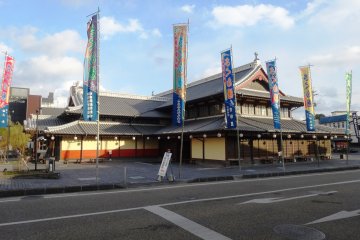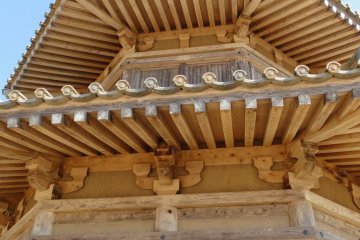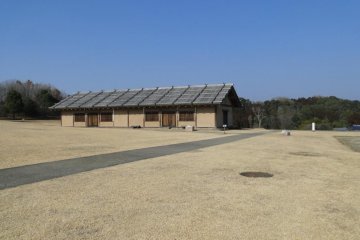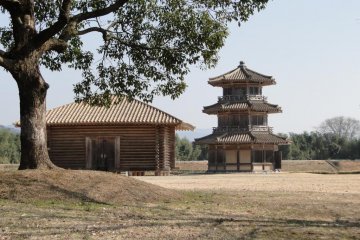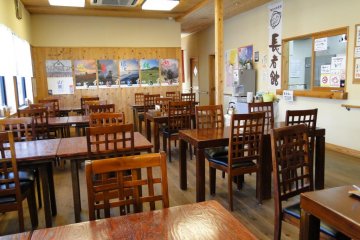More than a millennium ago, before quintessential Japanese castles like Himeji and Nagoya were even conceived, a cluster of wooden fortresses defended the island of Kyushu. These early castles may not have been as impressive as their latter counterparts, but they played a critical role in the eyes of Japan’s 7th century Yamato Court – they were the first line of defense against an invading force from the Asian mainland. With a political presence established by the Imperial Court at Dazaifu in modern-day Fukuoka Prefecture, a ring of castles was constructed to protect this defacto capital of Kyushu.
You’re unlikely to casually stumble across any of these castles today. When the threat from China and Korea waned a few centuries later, most of the buildings fell into disrepair. However, the town of Kikuchi in Kumamoto Prefecture has recently rebuilt part of their ancient castle site, thanks to the artifacts unearthed by archaeologists during a comprehensive dig in 1967.
The octagonal drum tower is the first thing you’ll see as you arrive at the Kikuchi Castle Park. Standing just off the country lane leading to the site, this meticulously reconstructed tower sits serenely against a backdrop of rice paddies and rolling hills. It’s the tallest building on the expansive site, but not the only one. Nearby stands a square storehouse, where archaeologists unearthed fossilized grains of rice that point to the site’s original use. Slightly further on, a long set of barracks cuts across an otherwise empty field. Although none of these buildings can actually be entered, visitors have free access to the entire site and you’re more than welcome to stick your head in the door for a peek.
Elsewhere around the grounds, cement poles stick up from barren patches of earth. These protrusions actually mark the spot of thousand-year-old foundations from buildings that have yet to be identified or imagined. In total, the traces of 72 buildings were discovered in the 1967 dig.
There are a variety of walking trails that crisscross the park and some lead miles away to picnic tables just barely visible on the edge of the property. With the looming shadow of volcanic Mt Aso on the horizon and a host of flowering trees scattered about, the Kikuchi Castle Park is an excellent place to bring a picnic lunch on a sunny day.
There is a small museum on site – free, just like the grounds itself – but English information inside is lacking. Linguistic differences don’t seem to daunt the staff though, and they can provide leaflets on the local area in English as well as attempt to explain some of the museum’s exhibits. If you’re not too keen on popping back into Kikuchi town for a bite to eat, the attached restaurant serves up perhaps the heartiest bowl of dangojiru (a chicken noodle soup with local vegetables) I’ve ever tasted.



